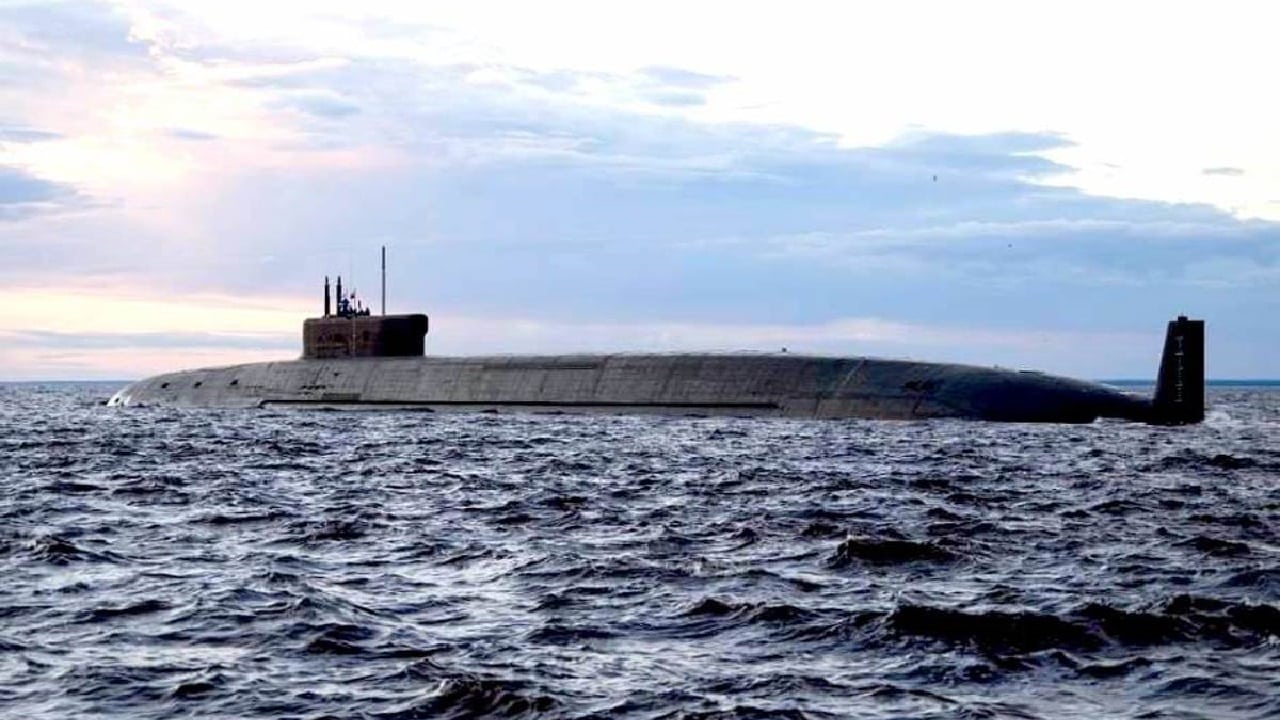Russia’s Pacific Fleet is reportedly slated to receive three new submarines in 2022. According to Russian state media, the Borei-class ballistic missile submarine Knyaz Oleg, the Yasen-M-class nuclear submarine Novosibirsk, and the diesel-electric attack submarine Magadan is slated to join the Pacific Fleet’s submarine contingent.
A lot of responsibility
The Pacific Fleet has the largest area of responsibility of any of Russia’s fleets, encompassing the entirety of the Pacific and Indian Oceans and an eastern portion of the Russian Arctic. In the lead-up to Russia’s war in Ukraine, the Pacific Fleet’s cruiser Varyag and destroyer Admiral Tributs, as well as the supply ship Boris Botuma, were dispatched to the Eastern Mediterranean to support Russian operations there. However, the Russian Pacific Fleet’s involvement in Moscow’s invasion of Ukraine has been relatively limited. The fleet did apparently lend logistical help in moving equipment from Russia’s far-flung Kuril Islands to the Russian mainland for transport to Ukraine.
The Russian Pacific Fleet is smaller than its Soviet predecessor. But it has grown in recent years, and it brings together a mix of modern and legacy Soviet ships. As of April 2022, the fleet officially includes 53 surface warships and 23 submarines, including the three set to join this year. While the Knyaz Oleg, Novosibirsk, and Magadan have already been assigned, they have not necessarily traveled to the Pacific Fleet’s home base or its area of responsibility yet.
While Russia’s most recent Maritime Doctrine places a high emphasis on the Pacific Fleet’s ability to defensively secure Russian interests in the Pacific and Indian Oceans, the additional deployment of Borei and Yasen-M ships appears to raise questions about those doctrinal aims. After all, these ships can take the fight to distant enemies by serving as nuclear-ballistic and cruise-missile submarines.
The new submarine additions
The Knyaz Oleg is a nuclear-powered, ballistic-missile Borei-A-class submarine. The Borei-A class is an iteration of the standard Borei class. They are larger and more advanced than their predecessors. Built by Sevmash in Severodvinsk, the Knyaz Oleg is the fifth Borei-A submarine to be produced. The submarine is powered by an OK-650 nuclear reactor. It is designed to carry 16 Bulava submarine-launched ballistic missiles and has six torpedo tubes capable of carrying RPK-2 Vyuga anti-submarine missiles. Potentially hinting at a future service life of covering Russia’s eastern Arctic zone of responsibility, the Knyaz Oleg has been conducting a series of training exercises on the use of its Bulava missiles, as well as the firing of torpedoes to break holes in Arctic ice for the submarine’s emersion.
Accepted into the Russian Navy simultaneously with the Knyaz Oleg at a December 2021 ceremony virtually attended by Russian President Vladimir Putin, the Yasen-M-class Novosibirsk is another nuclear-powered submarine. Equipped with a KTP-6 monoblock reactor, the Novosibirsk and its Yasen-M sisters are some of the quietest vessels in Russian service today, and they can carry a combination of Kalibr ground attack missiles and Zircon or Oniks anti-ship missiles. Unlike the Borei-A-class submarines, the Novosibirsk is a guided-missile submarine. The two classes of submarine would play different roles in a hypothetical conflict.
Despite not being nuclear-powered like the Novosibirsk or the Knyaz Oleg, the Magadan is designed to fulfill a similar role. The Magadan is an example of the Project 636.3 Kilo class of attack submarines, and it was commissioned into the Russian Navy in October 2021 as the third of six such submarines ordered for the Pacific Fleet. As a Project 636.3 class, the Magadan is powered by a diesel electric system and can carry Kalibr ground attack and anti-ship missiles, as well as a variety of Strela and Igla air-defense missiles. Kilos such as the Magadan are also believed to be some of the quietest diesel-electric submarines in the world.
As Russia continues to deliver submarines to its Pacific Fleet, the command will likely continue to rely on a variety of nimbler vessels as part of its expansive mission of securing Russian interests in the Pacific, Indian, and Arctic Oceans.
Wesley Culp is a Research Fellow at the Center for the Study of the Presidency and Congress. He regularly writes on Russian and Eurasian leadership and national security topics and has been published in The Hill and the Diplomatic Courier. He can be found on Twitter @WesleyJCulp.

